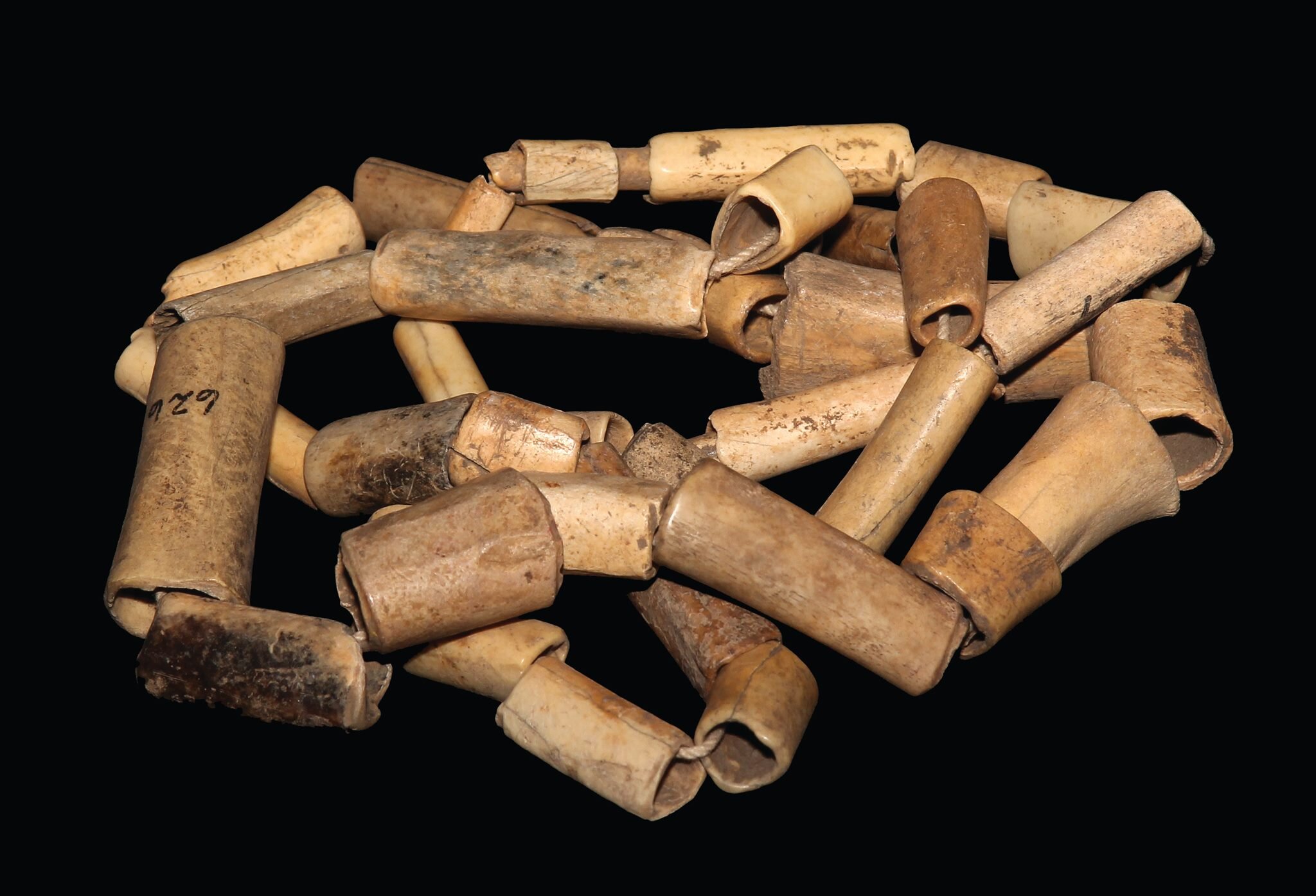Spiro Mounds Bone Bead Necklace
Today, the Spiro Mounds represent one of the wealthiest and influential centers of the pre-Columbian era. This beaded necklace tells a story of fashion, trade, and wealth in this sophisticated culture. This necklace is made from a 34-inch strand of hollow bird bone beads and found at the Spiro Mounds in Leflore County, Oklahoma. They are estimated to be used within 900 A.D. to 1450 A.D. While this necklace was made from bird bones, they also used other bones, shells, clay, wood, copper, copper-covered wood, fossils, stone, and even natural seeds! Native Americans made and wore jewelry just as we do today, to decorate or adorn ourselves in precious materials. Beads and pendants were made by drilling holes in teeth or intricately carving and polishing stone, bone, or shell.
The materials they used in these crafts are perhaps what is most impressive. They chose those materials for specific reasons; it is up to scholars today to find out why. In the case of these hollow bird bones, it becomes intriguing but more mysterious. Archaeologists have found evidence of the use of feathers and bones from turkeys, Canadian geese, and swans in Spiro crafts. However, there are depictions of falcons, eagles, and woodpeckers in the site's iconography, not the birds they actually use materially. One could assume if a ritual involving falcons, eagles, or woodpeckers would be important to use those specific birds' as ornamentation, but it is not the case.
Other materials used for beads found at the site can also complicate the overall picture. Nonperishable artifacts, such as shells, allow archaeologists to trace their origin and correspond to trade paths and cultural contacts. Many marine shells from Spiro have been traced to the Gulf of Mexico or the Atlantic Ocean, which established trade routes south and east. However, within the past two decades, a study was released, showing they also had trade connections west to the Pacific Ocean. Evidence of beads made from dwarf olive shells, found on the Channel Islands off the California Coast, have been identified from the Spiro Mounds. These beads are artisanal exports from Southern Californian Tribes. While we know their origin, tracing a direct trade route becomes more difficult. While most interactions came from the east and as far north as the Great Lakes, we also have contact as far south as Hidalgo, Mexico! An obsidian scraper found at the Spiro Mounds can be traced geologically to this site in Mexico!
While Spiro was not as powerful as Cahokia, it was the westernmost central hub of the Mississippian world with unprecedented wealth and influence. Alongside this impressive trade network, it had a well-developed religious center and political system. Their influence stretched literally from sea to sea!
Blog by Jazlyn Sanderson
References:
Texas Beyond History. “Spiro and the Arkansas Basin.” Accessed October 17, 2020. https://texasbeyondhistory.net/tejas/fundamentals/spiro.html
Kozuch, Laura. “Olivella Beads from Spiro and the Plains.” American Antiquity 67, No. 4. (October 2002): 697-709
Rogers, Daniel J., Carla J. Dove, Marcy Heaker, and Gary R. Graves. “Identification of Feathers in Textiles from the Craig Mound at Spiro, Oklahoma.” Southeastern Archaeology 21, No. 2 (Winter 2002): 245-251.
Oklahoma Historical Society. “Spiro Mounds Archaeological Center.” Accessed October 17, 2020. https://www.okhistory.org/sites/spiromounds


